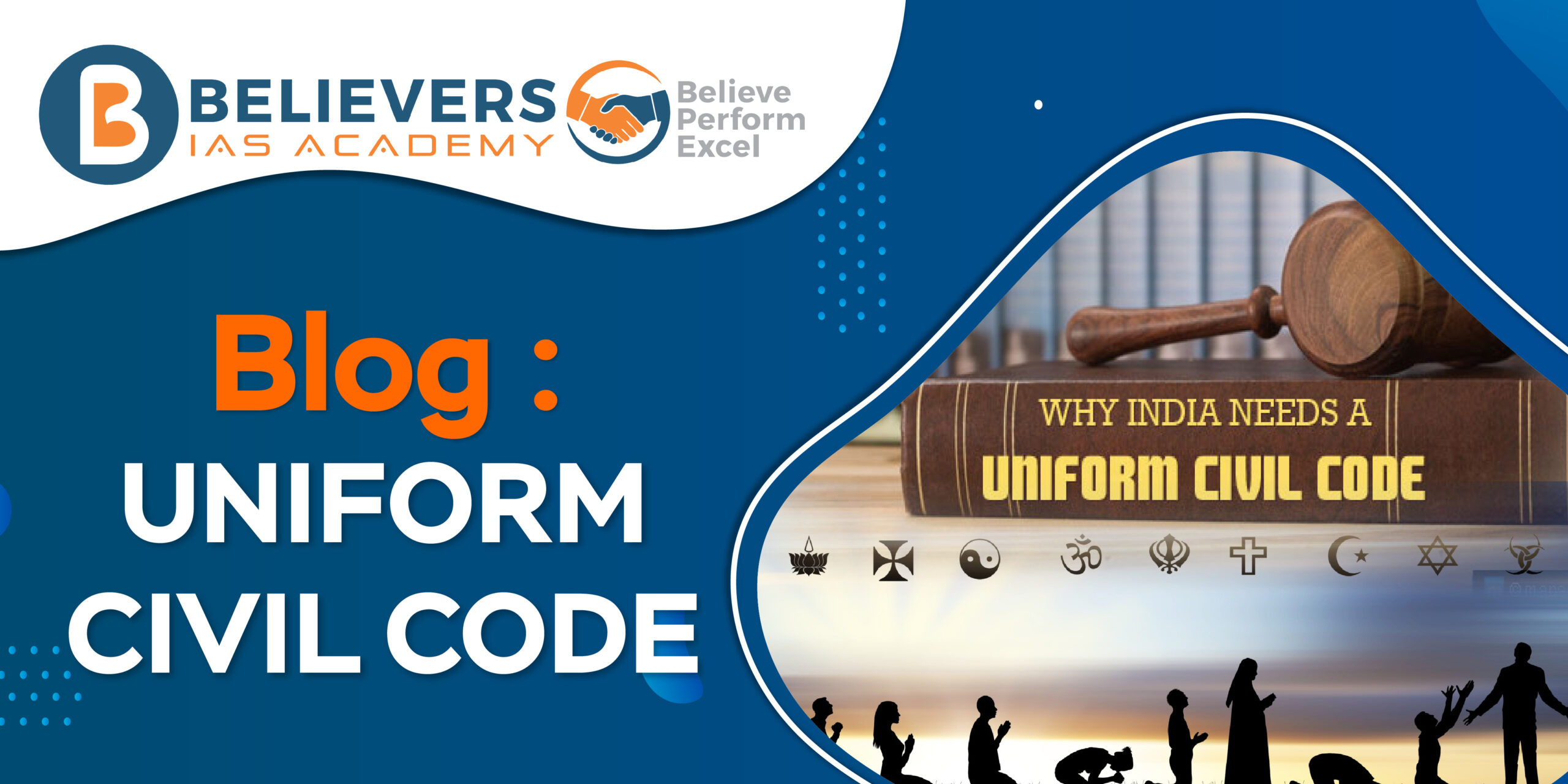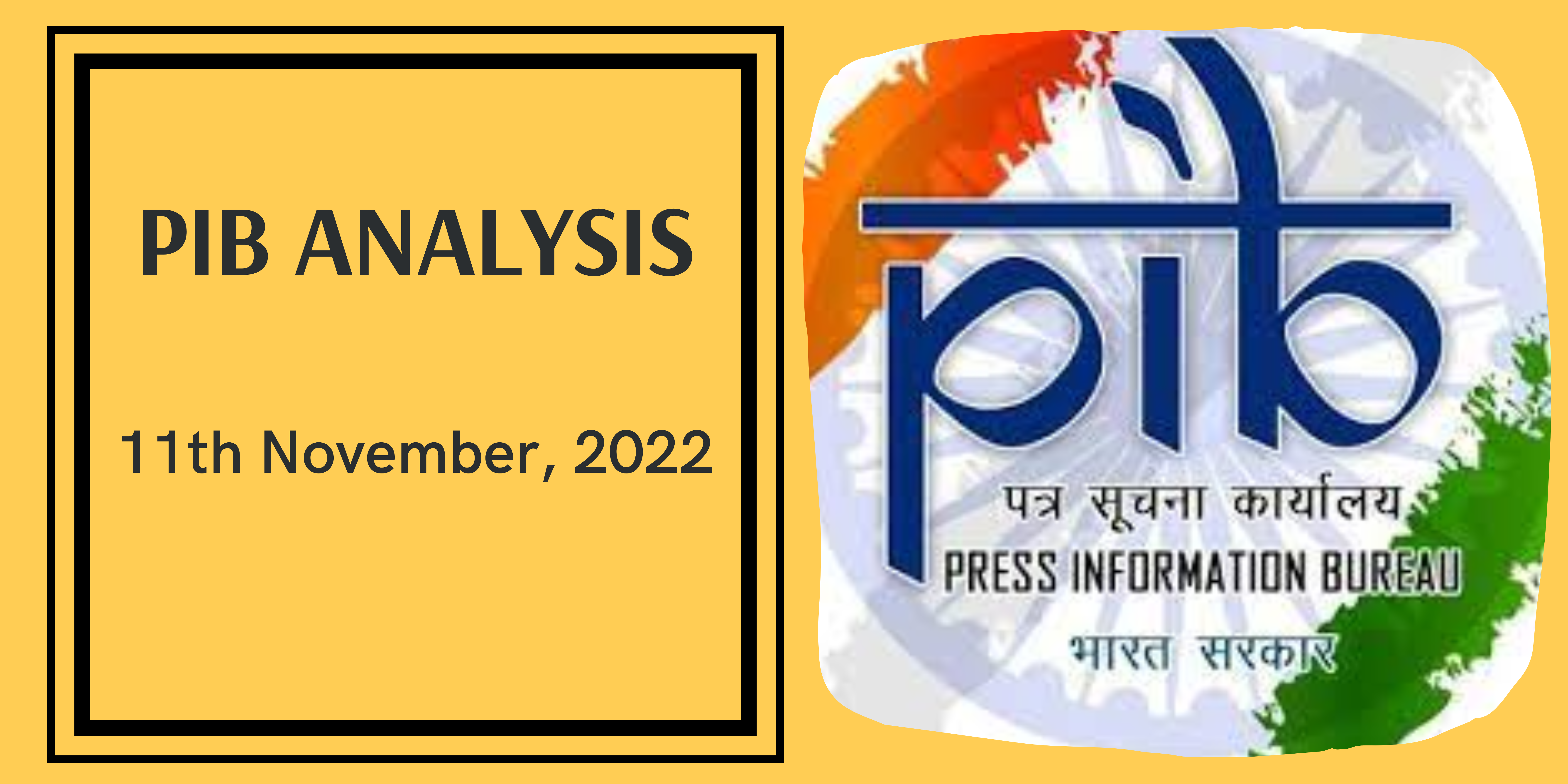Uniform Civil Code
In India, Article 44 of the Indian Constitution establishes the Uniform Civil Code (UCC) as a guiding concept. It emphasizes that the government must work to ensure that there is a consistent civil code for all Indians. A universal set of rules governing various civil concerns, such as marriage, divorce, adoption, inheritance, and succession is intended to replace personal laws based on the norms and traditions of distinct faith organizations.
What is the current status of UCC in India?
- Personal laws currently in effect: Different religious communities in India each have their own unique rules governing marriage, divorce, inheritance, adoption, and maintenance. Personal laws are currently ruled by religious texts.
- Goa’s Civil Code: The Goa Civil Code is a common family law system that survived Portuguese colonial authority in the Indian state of Goa. To present, it is the only Indian state having a universal civil code, albeit it has some unique rules for various communities.
- Provisions of the Constitution: Articles 25 through 28 of the Indian Constitutional Provisions: Constitution ensure freedom of religion, however, Article 44 instructs the government to use directive principles and common law while drafting national laws, suggesting the necessity for a single civil code for all citizens.
What is the historical background behind UCC?
- Colonial Period: The British tried to change native social and religious norms to conform to Western beliefs during their colonial control in India. They maintained the personal laws of various religious sects apart as part of their “Divide and Rule” strategy. They were able to control and take advantage of community conflicts as a result of this split, maintaining their hegemony over India.
- Customary law variations: Different Hindu and Muslim populations in pre-colonial India varied in their choice of scriptural or customary rules. The execution of customary laws, however, was problematic under British control because it was impractical to look into every particular practice of every group on an individual basis. Hindu laws became more preferred as a result of their comparatively simple application and the concern for high-cast Hindus
- Muslim Personal Law: Because Muslims are from a variety of local cultures, Sharia law, which is founded on Islamic principles, was not applied consistently throughout India. Even after adopting Islam, several communities kept up their traditional ways in addition to Islamic ones. As a result, different regions applied Sharia law differently. Furthermore, customary law was occasionally used in place of Sharia, which was frequently more sexist toward women.
- Legislative improvements: While India was ruled by the British, certain favourable improvements for Hindu women were made to the law. Hindu women were given some rights, such as the ability to remarry and inherit property, by-laws including the Hindu Widow Remarriage Act of 1856, the Married Women’s Property Act of 1923, and the Hindu Inheritance (Removal of Disabilities) Act of 1928. However, similar protections were not extended to Muslim women due to opposition from conservative Muslim groups who wanted to follow Sharia law.
- Post-Independence Era: Following India’s 1947 declaration of independence, there were discussions of enacting a common civil code that would apply the same rules to all citizens, regardless of their affiliation with a particular religion. Some political figures, including Jawaharlal Nehru, embraced the notion because they saw it as a way to modernize Indian society. Other leaders and conservative organizations, who advocated in favour of upholding personal laws for various religious communities, provided strong opposition.
- Hindu Code Bills: The Hindu Code Bill was launched to improve Hindu personal law. However, it was heavily criticized, especially for its clauses on monogamy, divorce, the elimination of coparcenaries, and daughters’ inheritance rights. The bill’s original backers, including female lawmakers, changed their minds and agreed to support a watered-down version of it. The Hindu Marriage Act, Succession Act, Minority and Guardianship Act, and Adoptions and Maintenance Act were all independent pieces of legislation that were passed in 1956 as part of the Hindu Code Bill.
- The idea of a uniform civil code was contained in the Directive Principles of the Indian Constitution, even though it has not yet been fully implemented. These principles serve as non-binding guidance that the government might use to further social and economic fairness as well as other objectives. “The State shall endeavour to secure for citizens a uniform civil code throughout the territory of India,” reads Article 44 of the Directive Principles.
- Special Marriage Act: The Special Marriage Act, passed in 1954, gave every Indian citizen, regardless of faith, the option of getting married in a civil ceremony. This statute made it possible for individuals to wed beyond the purview of any specific religious personal law. All of India, except for Jammu and Kashmir, was covered. Religious minorities received significant protection under the Special Marriage Act that was absent from their separate personal laws, such as the Muslim Personal Law. For instance, this law made polygamy illegal and replaced Sharia law with the Indian Succession Act to regulate inheritance and succession.
What are some of the Court cases that are important in this context?
- Mohammad Ahmed Khan v. Shah Bano Begum (1985):
- Muslim woman filed a maintenance claim against her ex-husband.
- The Supreme Court maintained her ability to rely on Section 125 of the Criminal Procedure Code to make a maintenance claim.
- Even when the Iddat period was over, the right to maintenance was upheld.
- The case sparked discussions about the need for a Uniform Civil Code (UCC) and gender justice.
- Union of India v. Sarla Mudgal, 1995:
- dealt with the problem of Hindu husbands marrying again without dissolving their former marriages by converting to Islam.
- Such conversions and subsequent weddings were ruled invalid by the Supreme Court.
- ruled that a Hindu husband could not switch to Islam to escape his responsibilities under Hindu personal law.
- emphasized the necessity of a uniform civil code to stop bigamous marriages and false conversions.
- Union of India v. Shayara Bano, 2017:
- centred on the rapid divorce custom known as triple talaq among Muslims.
- The triple talaq was deemed unlawful and a violation of women’s rights by the Supreme Court.
- It was decided that the practice is unlawful and violates the equality and dignity of Muslim women.
- The court suggested that a law governing Muslim marriages and divorces be passed by the Parliament.
- The case sparked debates on personal laws and the need for an Indian uniform civil code
What are the challenges faced when trying to implement UCC?
- Religious and cultural Diversity: India’s diverse religious and cultural environment makes it difficult to apply a uniform civil code because each community has its own set of rules and traditions.
- Political opposition: The topic of a uniform civil code is frequently made political, and various political parties may have opposing viewpoints, which causes opposition and a lack of agreement.
- Protecting Minority Rights: It might be challenging to make sure that the UCC upholds and respects the rights and traditions of minority communities without imposing the culture of the majority.
- Constitutional Hurdles: Due to constitutional and legal obstacles, it is challenging to establish a common code while adhering to the religious and cultural rights guaranteed by India’s constitution.
- Social Attitudes: It can take time and effort to change deeply set social norms around marriage, divorce, and inheritance so that they are consistent with a UCC.
- Implementation and Enforcement: To ensure that the UCC is effectively implemented and enforced throughout numerous locations with various social norms, reliable methods are needed.
What are the possible ways in handling the situation?
- Public Dialogue: Engage in comprehensive public consultation and dialogue with all interested parties, including racial and ethnic minority groups, legal professionals, social activists, and regular residents. Building a consensus and addressing apprehensions might be facilitated by understanding their issues and recommendations.
- Gradual Reforms: Introduce changes gradually, concentrating on important subjects like inheritance rights, adoption laws, and gender equality. Adopting a complete UCC gradually can make society more accepting of the idea and make the transition easier.
- Addressing Minority Concerns: Ensure that the UCC promotes a feeling of unity and common citizenship while upholding and respecting the rights of minority communities.
- Legal Harmonization: Work toward reducing inequities and ensuring consistency in the application of the law by harmonizing various personal laws. By using common aspects from already existing personal laws, this can be accomplished.
- Awareness Campaigns: Publicity campaigns To inform the public on the advantages of a UCC, remove myths, and win support for the reform, start public awareness campaigns.
- Gender Sensitization: Encourage programs that challenge patriarchal practices to develop a more inclusive legal system




